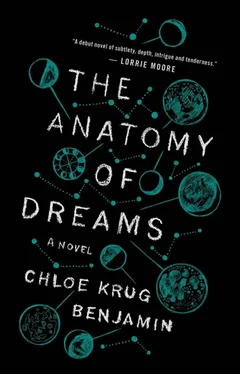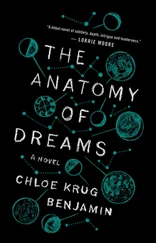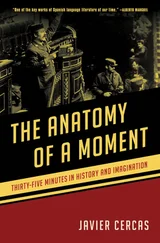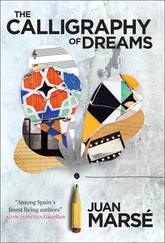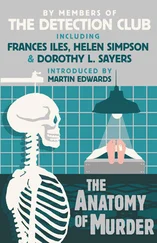And what were the dreams that Keller’s patients were compelled to act out? Usually, they were horrifying, trauma processing and self-protection gone terribly awry. Keller saw this as evidence of the mind’s obsession with safety and defense. He believed that nonparalyzed REM sleep was the site at which dysfunctional dreamers experienced the unresolved simultaneous potentialities of their waking lives, like alternate tapes that played on a loop. He believed, too, that training in lucid dreaming would give patients much-needed self-knowledge — and the capacity for intervention.
But earlier research in lucid dreaming had proved the technique also offered a myriad of benefits to normative sleepers: adventure and fantasy, nightmare resolution, problem solving, even physical healing. The term lucid dreaming was coined in 1913 by Dutch psychiatrist Frederik van Eeden, an acquaintance of Freud, who discovered that lucid dreamers were able to think clearly, act intentionally, and remain cognizant of the circumstances of waking life — all while experiencing a dream world that felt equally real. Interest in lucid dreaming flagged until the late 1960s, when van Eeden’s paper was reprinted in books by dream scholars Celia Green and Charles Tart. In 1987, Stephen LaBerge — a psychophysiologist with a bachelor’s degree in mathematics — founded the Lucidity Institute. LaBerge did more than validate the study of lucidity in academia: he also created the first technique for lucidity induction and developed a series of light-emitting devices that made lucid dreaming available to an increasingly curious public. Some of Keller’s funding came from the normative dreamers who attended his classes and retreats — people who wondered, as he did, what the mind had to offer when exercised to its full potential.
Keller’s timing was impeccable: his research also emerged in the midst of a cultural fascination with the unconscious mind and its capacity for violence. As part of my reading that summer, I was expected to familiarize myself with two watershed trials. In 1988, a person was acquitted, for the very first time, of murder while sleepwalking. Ken Parks, an unemployed high school dropout in his midtwenties, had risen from sleep, driven fourteen miles to the home of his in-laws. He nearly killed his father-in-law, and he stabbed his mother-in-law to death. He woke several hours later to find himself standing above her body, with no memory of the event and a faint feeling of pain in his hands. He was acquitted on the basis of sleepwalking at a trial whose verdict was later upheld by the Canadian supreme court, which declared that his actions were due to a noninsane automatism. The supreme court believed that Parks’s actions were so rare, so anomalous, that they would never be repeated; but the Parks case, it turned out, would set a controversial precedent.
In 1999, the year I left for college, Keller testified as an expert witness at the trial of Scott Falater, a Mormon and father of two. That night, Falater attempted to fix the pump that filtered water for his backyard pool, but he went to bed when it became dark around nine thirty. About half an hour later, Falater rose, just like Ken Parks, and returned to the pump. What happened next is the product of expert conjecture and the eyewitness account of Greg Koons, Falater’s neighbor, who saw Falater drag the stabbed body of his wife, Yarmila, into the pool and drown her. Falater then changed into his pajamas, tucked his bloody knife and work clothes into the wheel well of his car, and returned to bed. He woke, along with his children, to the sound of police dogs. Yarmila had been stabbed forty-four times, and though the evidence proved resolutely that Falater had killed his wife, he never regained any memory of the event.
The court ordered an array of psychological tests, but the murder could not be tied to a psychotic episode, a seizure, or a dissociation disorder. The psychiatrist could not diagnose him with any psychiatric illness, and Falater’s scores on the Minnesota Multiphasic Personality Inventory showed him to be almost ideally normal, with no psychopathic tendencies. They found only that Falater had been anxious about an ongoing struggle at work, which had left him feeling insecure and emasculated, and that his sleep had suffered. Falater had begun to use caffeine pills during the day, and at night, his rest was difficult and uneven.
Unlike Ken Parks, Scott Falater was pronounced guilty. The prosecution argued that Yarmila’s murder had been consciously planned and executed, and the jury was not ready to believe something as outlandish as the idea that Falater had been sleepwalking. But the case became a point of contention in an ongoing debate about the role of sleep in emotional regulation — and what happens when the regulation process is disturbed. Keller saw a disordered dream life as a critical indication of unrest in the patient’s waking life — a place of uninhibited, instinctive emotionality, and therefore, a site of both great danger and great healing.
“For dreamers to return to a state of mental health,” he said, “they must understand their dreams, not erase them. The patients I see keep cycling through the same nightmares for a reason. And until they discover what that reason is, they’ll never be safe — and neither will their bedmates.”
Keller wanted Gabe and me to be able to dream lucidly before we helped him to train others. He taught us the MILD technique, Mnemonic Induction of Lucid Dreams, developed by Stephen LaBerge. It was a four-step process that Gabe picked up with relative ease, but I was never really able to access it, as much as I understood it conceptually. The first step was dream recall. Like Keller’s workshop participants, we slept with notebooks beside us, writing down whatever we could remember as soon as the alarm went off. Next came reality checks: in order to recognize a dream state, Keller taught his patients to look for certain common markers. I knew the signs: difficulty reading words, flashing lights or ill-defined light sources, problems with mechanical objects, and, of course, the dead. I knew to meditate before bed — my body soft and relaxed until the edges of the waking world began to smudge and dissolve — but as soon as I sank into sleep, my mind went dark until I woke, disoriented and increasingly frustrated. Step three, lucid affirmations — commands programmed into memory and recalled later, while dreaming — was even more hopeless. Keller had me focus on my hand— When I see my hand in my dream , I was to repeat to myself, I will know I am dreaming —but whether I saw my hand in my dream or not, I never remembered it. The final step was to visualize a recent dream while awake, but since I couldn’t remember my dreams, I spent most of these sessions lying irritably on my blue mat.
Finally, Keller encouraged me to wake myself out of REM sleep with an alarm clock and immediately write down whatever I could remember. I still couldn’t grasp whole narratives, but this method allowed me to piece together the recurring dream that occupied my mind that summer. Perhaps I would have been able to remember even more if I had not stopped the alarm clock system. I didn’t want to know any more of the dream, and I didn’t want there to be a document that preserved it. I destroyed what I had, feeding it into the shredder when Gabe and Keller were out, and I never brought it up with Keller again.
In the dream, I stood before a mirror in an old public bathroom, which seemed to be part of a previously grand hotel that had fallen into disrepair. The bathroom had beautiful details: crown molding, tarnished gold faucets, turquoise-and-black-tiled walls. The mirror was so foggy and stained that I couldn’t see myself clearly. I turned on the faucet, but no water came out, though I could hear it running in the pipes.
Читать дальше
